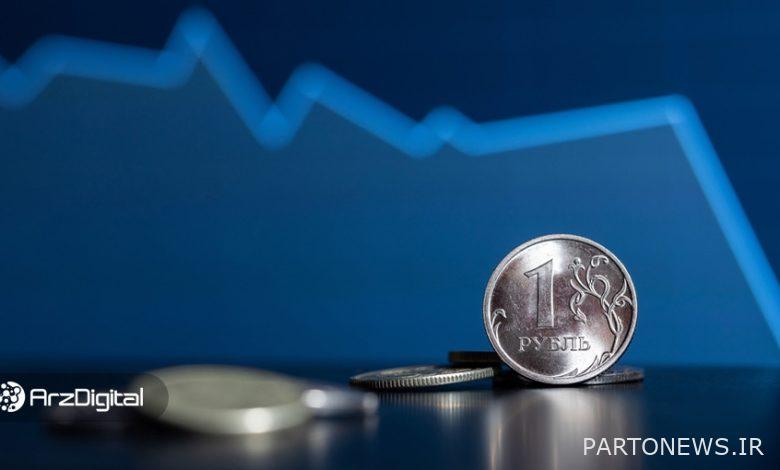Tetra record-breaking price against the Russian ruble; The work of Russian traders is becoming more difficult

According to the latest statistics, the price of Tetra in the markets that trade this digital currency against the ruble, the Russian national currency, has risen sharply over the past few days. Russian officials are seeking new monetary policies to counter inflationary pressures from foreign sanctions.
To Report Coin Telegraph, the stable price of Coin Tetra against the Russian ruble, has increased by 30% in just 5 days; An event that somehow reflects the immediate and negative impact of the war between Russia and Ukraine on the traditional financial system.
Bainance digital currency exchange data show that the Russian ruble is under pressure from inflation, and the price in the “Tetra / ruble” currency market has crossed 105 units for the first time in history.
Prior to the jump, the Tetra / ruble pair had a relatively stable price performance below the 80 level. However, with the start of the Russia-Ukraine war, the price of Tetra against the Russian national currency rose on Thursday, exceeding 90 rubles per tetra for a moment.
As tensions escalated, the European Commission on Sunday announced plans to remove Russian banks from the SWIFT global financial system.
The President of the European Commission, Ursula von der Leyen, said yesterday:
First, we need to make sure that some Russian banks are removed from Swift. This will stop their global activities and hinder their export and import. In the second step, we freeze the assets of the Central Bank of Russia. This prevents them from conducting transactions and also makes it impossible for them to liquidate assets.
At the same time, the Russian ruble has depreciated, and inflation has reduced the purchasing power of its holders by up to 30 percent.
Russia’s central bank also doubled its bank interest rate from 9.5 percent to 20 percent on Monday as an immediate countermeasure to rising national currency inflation.
Russia’s central bank said in a statement:
An increase in interest rates guarantees an increase in the deposit rate to the levels needed to offset rising inflation and the devaluation of the ruble. This is necessary to support financial stability and prices, as well as to protect citizens’ savings against the devaluation of the national currency.
In addition, the government has asked Russian companies to sell 80 percent of their foreign exchange earnings due to threats of a complete international financial ban.
On the other hand, the volume of bitcoin and altcoin transactions in Ukrainian digital currency exchanges has increased by more than 200% amid growing concerns about the stability of the national currency.
The Ukrainian exchange Kuna, which traded less than $ 1 million on February 21, has hosted $ 4.1 million worth of digital currency in the past three days. The National Bank of Ukraine has also imposed restrictions, including setting a limit on withdrawals from banks and ATMs, and restrictions on foreign purchases and withdrawals of foreign currencies.

